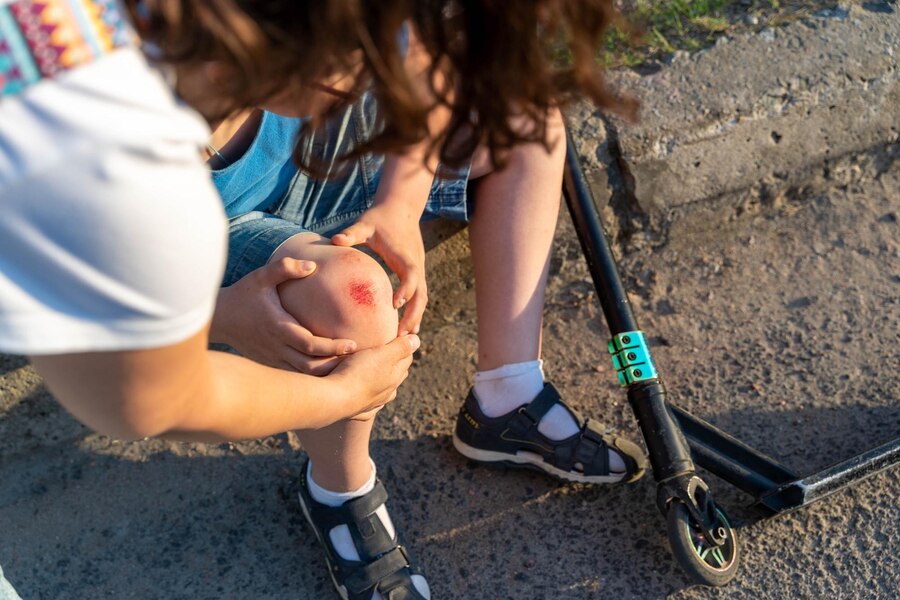
Youth sports are an integral part of childhood, offering numerous benefits like improved physical health, teamwork skills, and discipline. However, they also carry a significant risk of injury. Preventing injuries in youth sports is essential for ensuring the safety and well-being of young athletes, allowing them to enjoy the game while minimizing risks. This guide explores practical ways to prevent injuries, with insights backed by research and expert recommendations.
Understanding Common Youth Sports Injuries
Injuries in youth sports vary depending on the type of sport, but some common injuries include sprains, strains, fractures, and concussions. Understanding these injuries is the first step to prevention.
- Sprains and Strains: These occur when ligaments or muscles are overstretched. Sports that involve running, jumping, or sudden movements, such as soccer or basketball, frequently see such injuries.
- Fractures: Contact sports or high-impact activities can lead to broken bones, particularly in areas like the wrists, arms, or legs.
- Concussions: A prevalent issue in contact sports like football or hockey, concussions can have long-term health impacts.
For a comprehensive overview of injury types and statistics, refer to the CDC’s guide on youth sports injuries.
Best Practices to Prevent Injuries in Youth Sports
1. Proper Warm-Up and Cool-Down
Warming up prepares the body for physical activity by increasing blood flow to the muscles, reducing the risk of strains and sprains. Similarly, cooling down helps return the body to its resting state, preventing stiffness and soreness.
- Warm-Up Tips:
- Include dynamic stretches, such as arm circles and leg swings.
- Incorporate light aerobic exercises like jogging or jumping jacks.
- Cool-Down Tips:
- Use static stretching to relax muscles.
- Focus on breathing exercises to calm the body.
Explore ACE Fitness’ warm-up and cool-down guidelines for detailed techniques.
2. Proper Technique and Training
Teaching young athletes the correct techniques for their chosen sport is crucial. Poor form increases the likelihood of injuries, particularly overuse injuries. Coaches should focus on proper biomechanics and regularly assess athletes’ skills.
- Example: For pitchers in baseball, adhering to pitch count recommendations can prevent shoulder injuries.
- Resource: American Orthopaedic Society for Sports Medicine’s pitch guidelines.
3. Use of Protective Gear
Wearing the appropriate protective equipment can significantly reduce the risk of injuries.
- Examples of Protective Gear:
- Helmets (for football, hockey, cycling).
- Mouthguards (for basketball, soccer).
- Shin guards (for soccer).
Ensure all gear meets safety standards set by organizations like NOCSAE.
4. Encourage Adequate Rest
Overtraining is a leading cause of injuries in youth sports. Young athletes need sufficient rest to allow their bodies to recover.
- Recommendations:
- Schedule at least one rest day per week.
- Rotate sports to avoid repetitive stress on specific muscles.
The American Academy of Pediatrics provides guidelines on managing rest and recovery.
Comparison Table: Injury Prevention Essentials
| Prevention Strategy | Key Benefits | Example Resource |
|---|---|---|
| Warm-Up & Cool-Down | Reduces risk of strains and soreness | ACE Fitness |
| Proper Technique | Minimizes overuse and acute injuries | AOSSM |
| Protective Gear | Shields against impact-related injuries | NOCSAE |
| Adequate Rest | Prevents overtraining and fatigue | AAP |
Long-Term Injury Prevention Strategies
Promote Physical Fitness
Building strength, flexibility, and endurance in young athletes helps create a resilient body that can withstand the demands of sports.
- Strength Training: Focus on age-appropriate exercises.
- Flexibility: Encourage yoga or Pilates for improved range of motion.
For training programs tailored to youth, check NSCA’s guidelines.
Focus on Nutrition and Hydration
Proper nutrition fuels the body, while hydration prevents cramps and heat-related illnesses.
- Key Nutrients:
- Protein for muscle repair.
- Calcium and Vitamin D for bone health.
- Hydration Tips:
- Drink water before, during, and after activities.
Refer to ChooseMyPlate.gov for dietary recommendations.
Frequently Asked Questions (FAQs)
1. What are the most common injuries in youth sports?
The most common injuries include sprains, strains, fractures, and concussions. Visit KidsHealth for a detailed breakdown.
2. How can parents help prevent injuries?
Parents can ensure their children wear proper gear, get enough rest, and follow safety protocols. Safe Kids Worldwide offers tips for parents.
3. What role do coaches play in injury prevention?
Coaches are vital in teaching proper techniques, ensuring adequate training, and fostering a safety-first environment. For coaching resources, visit NFHS.
Conclusion
Preventing injuries in youth sports requires a multifaceted approach involving athletes, parents, and coaches. By focusing on proper training, equipment, rest, and nutrition, young athletes can enjoy their sports safely and build a foundation for lifelong physical activity. Resources like the CDC, AAP, and NOCSAE provide valuable tools and guidelines to enhance safety in youth sports. Emphasizing injury prevention not only protects the physical health of young athletes but also fosters their love for sports, ensuring they reap the numerous benefits of athletic participation.
